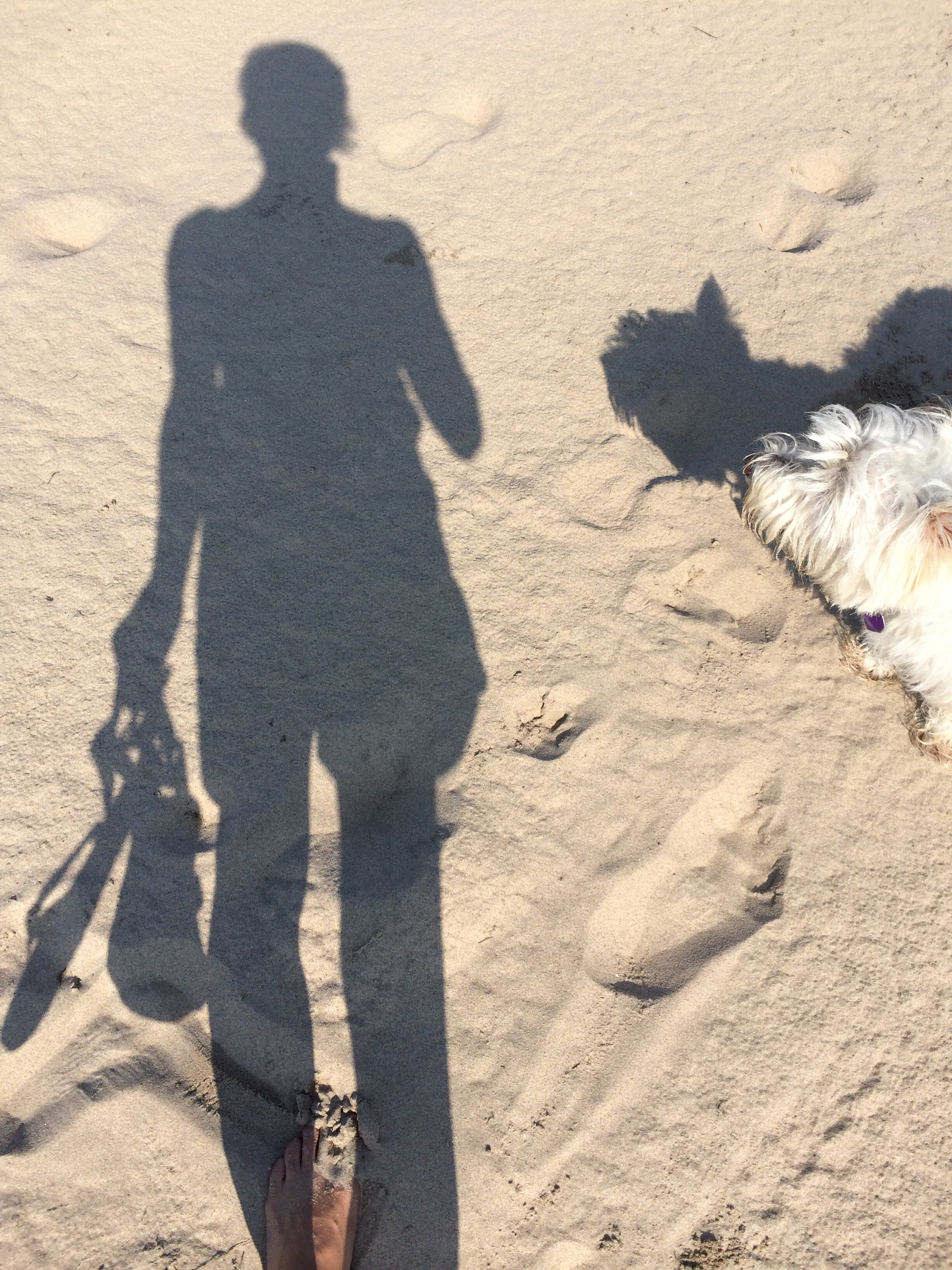My Holistic Escape From Chronic Pain
Anklylosing Spondylitis (AS) is a type of arthritis causing inflammation around the spine, attacking the bones and joints, and can affect the arms and legs as well. AS also causes inflammation in the skin, intestines, and eyes. Symptoms of AS include lower back pain, overall body stiffness, sciatica, and joint pain. Over time, the spine can fuse together, and many sufferers develop a hunched-over appearance.
There is no cure.
I was diagnosed with AS in 2016. Since it’s so difficult to diagnose, I had to suffer with its symptoms since 2011.
Why might I be writing about health for a website focused on mindful, simple living? Where does my experience with AS fit in with Everthrive?
Well, here’s the short answer. Part of living mindfully is choosing what I expose myself to. I’ve found that by being mindful about diet, stress management, simple living, and moderate exercise, my AS has gone into remission.
But I didn’t figure this out right away. I had to experience years of juggling pain medications, steroids, and injecting harsh chemicals into my upper thigh. I dealt with bouts of immobility. There were times where my legs gave out from under me. Sometimes I just gave up midway down the stairs and would cry. There was hopelessness, anger, depression, shingles outbreaks and panic attacks.
If you’d like to continue reading, here is my AS story.
A selfie from Arlington High School, where I taught 10th, 11th, and 12th grade English and Literature.
In 2011, I was teaching high school English in Arlington, Massachusetts. After school, I helped coach our cross country team, and I ran with the team daily. I was 28, and I loved my life and my job.
It was about this time when I started experiencing shooting pains down my legs. Sometimes the pain would be in the right leg. Other times the left leg. It came and went. I started doing more stretches pre and post run, but my efforts were fruitless. I gave in and saw a doctor, who reprimanded me for trying to keep up with 14-year-old runners. She gave me some pain killers, and I went on my way.
Limping became normal for me. I became skilled at hiding it. Sometimes the pain would subside for weeks, other times it was a daily issue. I learned to live with it.
Then, on a spring break trip to New York City, my left eye became very red and watery, and very sensitive to the light. I assumed I had scratched it while taking my contacts out, or perhaps it was seasonal allergies. I purchased Visine, allergy drops, and saline drops, and applied them every hour or so. The sights of NYC were blurry and distorted. I had to wear sunglasses even indoors. When I returned, I promptly went to an ophthalmologist who diagnosed me with iritis (inflammation of the iris). She gave me milky-colored steroid drops to use every 2 hours, and suggested I get a blood test also, “to be safe.” I disregarded this last bit of advice, and went on with my life. My eye healed, and I was only hobbling sometimes.
Then, in 2013, after moving back to the Chicago area, I got the eye infection again. I knew exactly what to do; I got the drops, and again the doctor suggested a blood test “to rule out lupus, among other autoimmune diseases.” I disregarded this advice for a second time. I was healthy. I ate a balanced diet. I did Pilates twice a week and walked my dog to and from the beach every day. I went hiking and backpacking occasionally. I was on my feet all day teaching. I consistently ran 3-5 miles at a time. I felt like I was in the best shape of my life, besides my continuous hobbling, intermittent sciatica, and lower back pain.
Fast forward to 2015, and I got iritis again.
And, in April 2016 the pain in my legs got much worse. I could barely walk. I would take a step and then my leg would buckle underneath me. I couldn’t sit for very long because the pain in my lower back was so severe, and would radiate down one leg or the other, depending on the day.
The pain was infuriating and random. Every morning I woke up paralyzed with stiffness. I would roll out of bed like a feeble 90-year-old woman and shuffle to the bathroom. I couldn’t lift my legs to put on underwear or jeans. I couldn’t bend over to put on my shoes. I had to swivel my body in and out of the car. I quit Pilates. There was a short period of time where I was completely immobile. Laying down was painful, but walking was much more painful.
At my lowest point, I was worried I wouldn’t be able to walk down the isle to marry my husband on June 11, 2016. How would that look? Would Josh have to carry me?
I did a lot of blaming. I blamed my condition on my activity level. I blamed it on my desk chair. I blamed it on a so-called inflamed disk that an MRI revealed. I blamed it on that one time I slipped on ice and bruised my tailbone. I blamed it on my mattress. But, the pain and immobility and stiffness seemed so much worse than it should be for those things. I had nothing left to blame, so I cried.
I began seeing many doctors, and one of them recommended physical therapy to correct my inflamed disk, so I went every day for 4 weeks. The exercises my PT taught me seemed to help. Slowly I regained mobility, but not without the help painkillers and steroids.
I was able to walk down the aisle and marry my best friend in the wedding of our dreams, but by the end of the perfect evening, I was having trouble walking.
Loving my husband. Smiling through the pain.
I thought, enough is enough. Maybe I should see if there something more causing this pain; some invisible condition attacking my body. I went ahead and got the blood work that each and every ophthalmologist had recommended to me.
The results came back. A protein called HLA-B27 was found on my white blood cells. HLA proteins help the body's immune system tell the difference between its own cells and foreign, harmful substances. If you have HLA-B27 on your white blood cells, you might have an autoimmune disease. Another MRI was ordered, and I was sent to a rheumatologist to go over those results.
He showed me an image of my deteriorating pubic bone, and told me very matter-of-factly that I had ankylosing spondylitis, a disease that could never be cured, and I’d be managing it my whole life.
I drove home 45 minutes oscillating between despair and anger and feeling that my life was over.
They told me I had to take medicine every day for the rest of my life.
The first pill I was prescribed was meloxicam, a drug that reduces pain, swelling, and stiffness of the joints. It also increases the risk of “severe stomach pain, black tarry stools, vomiting of blood or material that looks like coffee grounds, skin rash, swelling of the face, fingers, feet, or lower legs.” (Mayo Clinic)
Regardless of these side effects, I took this pill for one year, until Josh and I decided to start trying to have a baby.
Upon learning that meloxicam could also lead to spontaneous abortion, I stopped taking it, and I started taking Humera. I was told that it was mostly safe for pregnancy, but could also lead to serious infections and lymphoma, among other cancers. I gingerly agreed to take this, as I felt there was no other choice.
Humera comes through the mail, in a styrofoam cooler, and I had to inject it into my thigh. The first time I tried this, I was at my rheumatologist’s office. After I clicked the mechanism that jolted the cold medication into my bloodstream, I slowly lost touch with my surroundings. The nurse, the chair, and the paintings on the wall gradually pixelated into a white oblivion. I almost passed out. The paramedics were called - they thought I was going into anaphylactic shock, and so did I - but the episode passed, and was reduced to a panic attack.
Red flag heeded. I decided to seek out alternative methods of managing my disease. I began seeing a naturopathic doctor.
The office was more like a spa than a hospital. The air was imbued with essential oils, greenery cascaded from the ceiling, and there was even a waterfall.
After providing evidence and explaining my “situation,” the naturopath persuaded me to take a food sensitivity test, as well as a stool analysis. I basically had to collect my poo and send samples to the lab for 5 consecutive days, which was a bit strange as I was working as a teacher at the time and had to poop in a public bathroom into red-check paper hot dog trays.
The tests were revelatory. I was highly sensitive to eggs, cow dairy products, almonds, quinoa, and hazelnuts. All of these foods increased the inflammatory response in my body significantly. As a constant consumer of these specific foods, I was at a loss. What would I eat?
The naturopath also reminded me of the mind-body connection to illness. Stress is a large factor in setting off inflammatory responses. I would also need to identify and reduce as much stress as possible, and put up more barriers between myself and possible stressors.
Since my visits with the naturopath, I’ve learned so much about food and diet. There are certain foods can help fight inflammation and ease symptoms like joint pain and stiffness, and there are other foods that will most likely lead to joint pain and stiffness. (Every Day Health)
In addition to eliminating almonds, cow dairy, eggs, hazelnuts, and quinoa whenever possible, I’ve also been avoiding most processed and fried foods. I’ve lowered my inflammatory threshold considerably, and, in addition to managing stress, living mindfully, and making sure to exercise moderately, I feel I have a pretty firm grasp on how to manage my pain.
My AS has been in remission ever since I began taking a holistic approach to my health.
I’ve been without severe pain for years, and I haven’t taken medication to treat AS since August, 2017. I was really worried that my son would “break my deteriorating pelvis” when he was born, but we both emerged intact after a non-medicated birth.
Since I’m in remission, I’m often tempted to stray from my diet. When this happens, I remind myself of all the times I suffered with incredible pain, and I’m quickly convinced to stick to my mostly plant-based diet, high in Omega-3 fatty acids.
Avoiding stress is the hard part of pain management. Stress can come at us in so many different ways and forms! When non-life threatening stressors invade my life, I try to step back and think about how I can control my own response to stressors. I have the choice to worry, react, confront, ruminate, or otherwise negatively react. I can also choose to deal quickly and efficiently with the stressors, so that they go away. I consciously choose to focus on the present, and I try not to allow my mind to drift into concerns about the past or the future. Of course, this is a lot easier said than done.
I’ll never take my “pain free” life for granted. I’m so thankful for each day I can sleep through the night without pain. I can walk without fear of falling. I can run again. I can pick up my 2-year-old son, spin him around, and chase him around the yard when he wants to “run fast, Momma!” I can dance with my husband to our favorite songs. I can mow the lawn. I can walk through the grocery store and lift heavy bags from my car to the kitchen. All of these are so simple, and yet many people cannot do even the basic tasks due to chronic pain.
My husband Josh, our son Miles (26 months), and a pain-free Momma.
So, there you have it. My AS story. It’s personal to me, and I know that countless others have suffered much worse than I.
I am lucky I am able to manage holistically, but many people still need the extra help of medication to get them through the day.
Do you have experience with chronic pain? How are you able to manage it? I’d love to hear your story. If you feel comfortable, you can comment below, or send an email to ali.everthrive@gmail.com
With gratitude,
Ali








